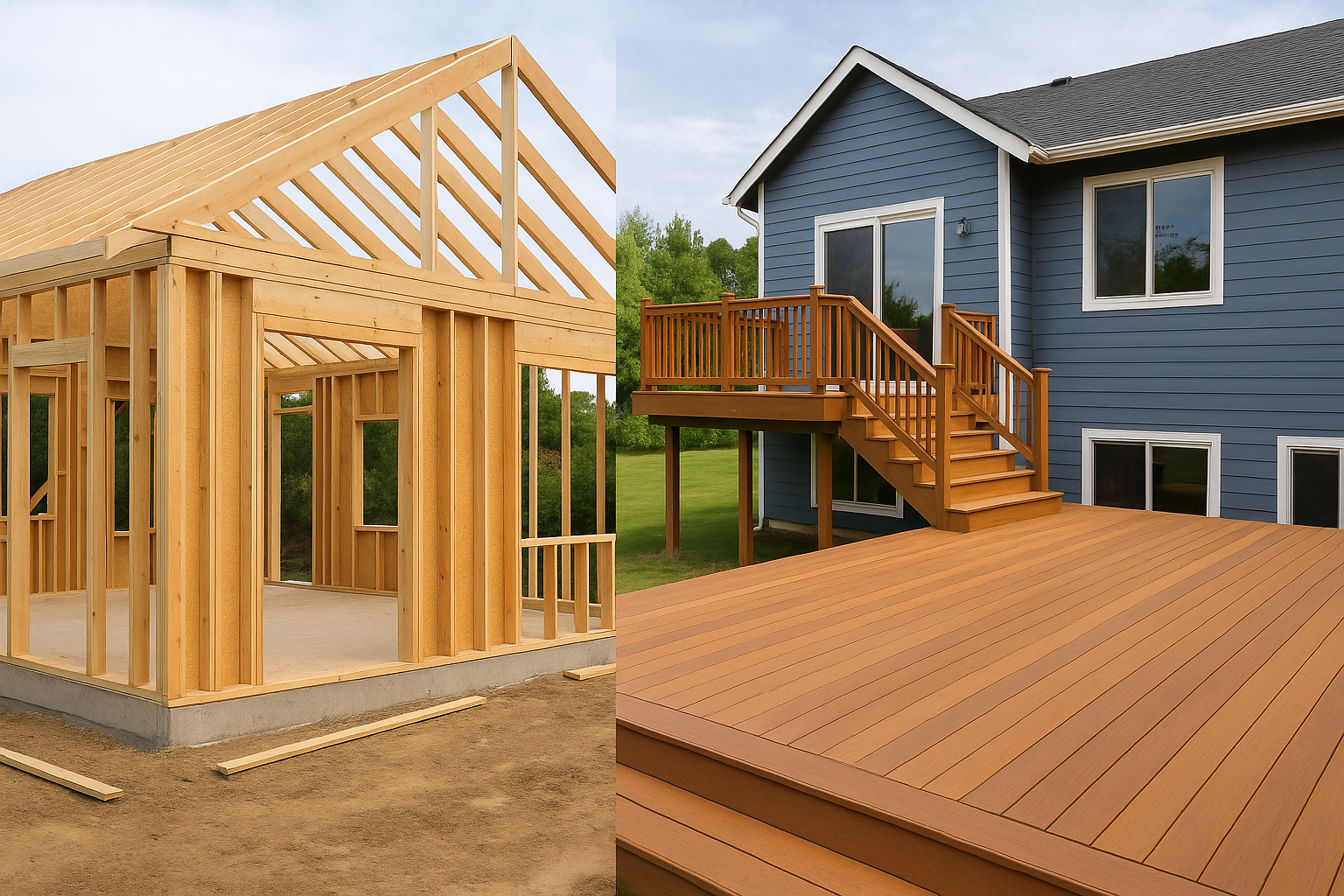Design-Build vs. Traditional home Remodeling: Which Approach Suits Your Needs?
When it comes to upgrading your home, remodeling is one of the most exciting and rewarding investments you can make. From updating your kitchen to adding a new bathroom or expanding living space, the way you approach the process can make all the difference.
Two of the most common methods are design-build and traditional home remodeling.
But what exactly do these terms mean, and how do you know which one is right for you? Let’s break it down so you can feel confident about your next project.
What Is the Design-Build Approach?
The design-build method streamlines remodeling by combining design and construction under one roof. Instead of hiring an architect or designer separately, you sign a single contract with a design-build firm. That design and construction team handles everything—from creating your design to executing the build.
- One team, one contract: You have a single point of contact managing the entire process.
- Simplified communication: Designers and builders work together seamlessly, reducing the risk of misunderstandings.
- Faster timeline: Because design and construction overlap, projects often finish sooner than traditional remodels.
If you’ve ever searched for “design build firms near me” while considering a project, you’ve already taken a step toward this model.

What Is the Traditional Remodeling Approach?
In a traditional custom home remodeling setup, design and construction are handled separately. Typically, you would first hire an architect or designer to create detailed plans. Then, those plans go out to bid, and a contractor is chosen to bring them to life.
- Separate contracts: You’ll work with both a designer and a builder.
- Linear process: Design first, then bid, then construction—each stage happens in order.
- More stakeholders: Multiple parties can mean more coordination on your part.
This approach has been the standard for decades, especially when homeowners want maximum design freedom.
Key Differences Between Design-Build and Traditional Remodeling
Project Timeline
- Design-build: Because design phases overlap, construction projects move faster.
- Traditional: More steps and hand-offs often extend the timeline.
Budget and Cost Predictability
- Design-build: Early collaboration helps align design with budget from the start.
- Traditional: Competitive bidding can sometimes lower costs but may also create budget surprises.
Communication and Accountability
- Design-build: One design build team is responsible for everything.
- Traditional: Miscommunication is more likely when several parties are involved.
Flexibility in Design
- Design-build: Changes can be incorporated smoothly, but creativity may be influenced by the firm’s expertise.
- Traditional: Offers more freedom in choosing design styles and specialists.
Pros and Cons of the Design-Build Model
Pros
- Faster timeline and smoother design build process
- One contract and a single point of responsibility
- Strong collaboration between design and traditional construction
Cons
- Less opportunity for competitive bidding
- Design options may be more limited depending on the firm
Pros and Cons of Traditional Remodeling
Pros
- Greater design freedom and customization
- Multiple bids can give you pricing options
Cons
- Longer project timelines
- More coordination is required from the homeowner
- Higher risk of miscommunication between the designer and the contractor
Which Approach Is Right for You?
Ultimately, choosing between design-build vs. traditional home remodeling depends on your goals, budget, and personal preferences.
- Project size and complexity: Large, complex remodels often benefit from the streamlined approach of design-build. Smaller, highly customized projects may suit the traditional method.
- Budget flexibility: If you have a strict budget and want cost predictability, design-build may be the safer choice. If you’d like the flexibility of competitive bidding, traditional may work better.
- Design customization: If having complete creative freedom is a top priority, traditional remodeling may give you more options.
- Level of involvement: Want to be more hands-off? Design-build simplifies communication. Prefer to be closely involved in every decision? Traditional remodeling gives you that control.
Conclusion
Both design-build construction and traditional remodeling offer unique advantages. The best approach for you comes down to how much you value speed, budget control, customization, and simplicity.
Before making your decision, consider talking with local experts. Whether you’re browsing home remodeling ideas, searching for “design build firms near me,” or simply exploring “home remodeling near me,” consulting a trusted professional can help you find the right fit for your vision.
Your home is more than just a structure; it’s where your life happens. Choosing the right remodeling path ensures your project not only meets your needs but also enhances the way you live every day.
